#mochigome
Explore tagged Tumblr posts
Text

muchimuchi
20 notes
·
View notes
Text
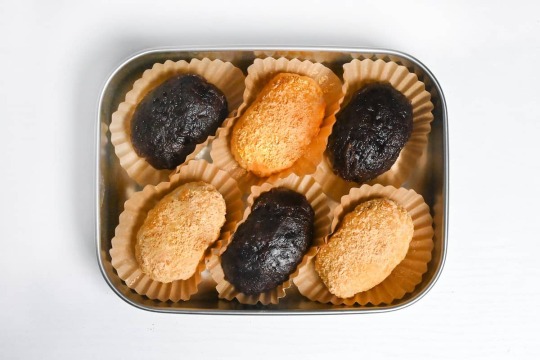
Ohagi (Botamochi) Sweet Rice Balls
#ohagi#botamochi#mochi#rice balls#food#japanese#dessert#asian#recipe#glutinous rice#mochigome#red bean#sudachirecipes
171 notes
·
View notes
Text
Mochi (もち, 餅) is a Japanese rice cake made of mochigome (もち米), a short-grain japonica glutinous rice, and sometimes other ingredients such as water, sugar, and cornstarch.
This is a mango flavored one. 🥭
📹: u_tastekitchen
#mochi#mochigome#japonica glutinous rice#glutinous rice#rice cakes#Japanese rice cake#japanese food#Japan#dessert#food#mango flavor
14 notes
·
View notes
Text
The Todorokis and food - Part 1: Kuzumochi (葛餅)
While working to a better, single version of my Todoroki mansion posts, I was tempted to add to it the foods we also know the Todorokis eat or the ones we see prepared in the house.
In hindsight though, it felt silly as foods aren't really neither architectonicals elements or furniture so I decided to make a separate post for them. As I work on the comprehensive version I decided to split the demo version in small parts so that people could enjoy it as it gets worked over.
This is the first bit, dealing with Enji's fave food.
ENJI’S FAVORITE FOOD: Kuzumochi (葛餅) and all that’s connected to it
In the manga we never see Enji eating it, the fact it's his favorite food is an info we learn from his profile.

However in "Ultra Impact", one of the video games, he comments about receiving Kuzumochi as a gift from a long established store that many people in his agency go at.

We also have a mention of it in "School Briefs 3" where, in the bonus fantasy story "U.A. Quest", Endeavor is described as the lonrd of the land and owner of a "kuzumochi fruit tree" and is so obsessed with it that has caused the family to break apart, driving his wife away and would want his guards to execute whoever were to try to eat the fruits of his tree. Shōto, as his heir, is supposed to keep the tree growing, but as he hates his father, refuses to so do.
Mochi (もち or 餅): a Japanese rice cake made of ‘mochigome’ (もち米), a short-grain japonica glutinous rice, and sometimes other ingredients such as water, sugar, and cornflour. The steamed rice is pounded into paste and molded into the desired shape. The shape of mochi varies depending on the region, so it can be round (west Japan) or square (east Japan). There are also various variants that slightly change the ingredients with which its done. In Japan, it is traditionally made in a ceremony called ‘mochitsuki’ (餅搗き).



While eaten year-round, mochi is a traditional food for the Japanese New Year, and is commonly sold and eaten during that time, also in form of ‘zōni’ (雑煮), a Japanese mochi soup...

...or as a ‘kagami mochi’ (鏡餅 "mirror rice cake"), made by two round mochi, the smaller placed atop the larger, and a ‘daidai’ (橙), a Japanese bitter orange with an attached leaf on top, which is first used as a traditional Japanese New Year decoration and then eaten on the second Saturday or Sunday of January.


Kuzumochi (葛餅): a transparent, pulpy ‘mochi’ (もち or 餅) made of ‘kuzuko’ (葛粉), which is the flour derived from the root of the ‘kuzu’ (クズ), instead than of cornflour. It is usually served chilled (which increases its elasticity), cut in bite-size slices which are topped with ‘kuromitsu’ (黒蜜 “black honey”) first and then ‘kinako’ (黄粉 or きなこ “yellow flour”), otherwise they won’t mix and eaten with chopsticks. If eaten freshly made while it’s slightly warm inside, one can enjoy its chewy and fluffy texture. The usual preparation consists in combining the flour with water and sugar, and cooking it over a gentle heat, stirring continuously until the mixture thickens and becomes transparent. This process also imparts it an elastic texture. The transparent appearance of the final product contributes to a cool sensation, making it a popular choice for consumption during warmer months. This is Enji’s favorite food.

Japan has however another sweet with the same name but written with different kanji (久寿餅) which is a mochi cake made from Lactobacillales-fermented ‘komugiko’ (小麦粉 “wheat flour”), and is not transparent but more like milky white. It is specialty dish local to certain wards of Tokyo.

Kuzuko (葛粉): flour derived from the ‘kuzu no ne’ (クズの根), the root of the ‘kuzu’ (クズ), a group of climbing, coiling, and trailing deciduous perennial vines native to much of East Asia better known as Kudzu or Japanese arrowroot. It’s worth to mention most products sold as ‘kuzuko’ are mixed with flour from other sources (potato, sweet potato, cornflour, etc.).

Komugiko (小麦粉 “wheat flour”): wheat flour made by milling wheat and is used as an ingredient in various foods which in Japan is also called ‘udonko’ (うどん粉 “udon flour”) or ‘MERIKEN ko’ (メリケン粉 “American flour”).

Kuromitsu (黒蜜 "black honey"): a Japanese sugar syrup, similar to molasses, but thinner and milder and is a central ingredient in many Japanese sweets, among which ‘kuzumochi’ (葛餅).

Kinako (黄粉 or きなこ "yellow flour"): roasted soybean flour, used in Japanese cuisine, better known in English speaking countries as "roasted soy flour". Kinako is mostly used as a topping to flavor rice cakes like ‘mochi’ (もち or 餅).

Kuzumochi (葛餅) recipe
Ingredients:
40g kuzuko (arrowroot flour)
200ml lukewarm water
1½ tablespoons granulated sugar (optional)
Kuromitsu (Brown Sugar Syrup)
Kinako (Roasted Soybean Flour)
Instructions:
In a small bowl whisk the Kuzuko into the water until all lumps are removed (some also add 1½ tablespoons granulated sugar to the mix). Use a whisk or rubber spatula to dissolve the starch completely. It starts out as an opaque white liquid.
To make sure there are no more lumps, strain it to a sieve before pouring it in a small saucepan.
Heat over medium heat stirring with a wooden spoon until the mixture thickens and becomes white (it usually takes 3-4 minutes).
Turn the heat down to low and cook for a few more minutes continuing to stir the ingredients in the pot to make them homogeneous, until the mixture becomes translucent and bubbly.
Afterward place it in a container that will work as a mold to give it its shape.
At this point you can:
let cook for 30 minutes to room temperature
immerse the bottom of the containers in cold water
immerse the bottom of the containers in cold water to which ice was added.
The last two options allow the kuzumochi to harden faster.
You can serve the kuzumochi while it is still soft, or even put it in the refrigerator for 1-2 hours to further harden and cool.
Serve it cut in slices, cover it in Kuromitsu and only after add the Kinako so as to insure the two will mix well.
NEXT: TŌYA AND SHŌTO’S FAVORITE FOOD: soba (蕎麦) and all that’s connected to it
6 notes
·
View notes
Text
:3

El mochi es un pastel japonés hecho de mochigome, un pequeño grano de arroz glutinoso. El arroz se machaca hasta convertirlo en una pasta y se moldea con la forma deseada. En Japón se hace tradicionalmente en una ceremonia llamada mochitsuki. 🌸❕
⊹₊。ꕤ˚₊⊹⊹₊。ꕤ˚₊⊹⊹₊。ꕤ˚₊⊹⊹₊。ꕤ˚₊⊹⊹₊。ꕤ˚₊⊹⊹₊。ꕤ˚₊⊹⊹₊。ꕤ˚₊⊹⊹₊。
໒꒰ྀིっ˕ -。꒱ྀི১🩷

6 notes
·
View notes
Text

Happy Birthday to Yui Mochigome, Underland’s Ultimate Wagashi Artist!
Dear ⍰ ⍰ ⍰ , Today’s my birthday! As per usual, it’s the one day I’ll let myself write to you. Of course, I know I won’t get a response. Or there’s the possibility of you getting these and secretly keeping them to yourself without replying - in which case, I’m not surprised. Just…a little sad that you’d ignore me, hehe.
I’m doing just fine. Wagashi keeps me busy, and I’m not sure if you’ve heard, but I’m quite the prodigy. How is your work going? Did you make any new poisons or chemicals yet? Don’t do anything illegal with them - I’d laugh.
Next year, I hope to be even more talented than before. Puddle and I are celebrating today with a cake for ourselves and a trip to the flower fields, just like the better days. Please take care of yourself. I miss you every day, you know? Even though I’m truly happy here, I’m always a little bit homesick, I think.
Your best friend,
Yui Mochigome
5 notes
·
View notes
Text
@acquirdtaste x
It's finally gotten to the point where it can be lifted from the mortar and into a machine so that the glob of mochi can be cut into pieces for consumption and to add on other things like decorations or filling.
Her eyes darted the the sole audience member. It's not the first nor last time people would be watching; especially more so with the Caretaker having an interest of creating tourism.
"I can see you over there! If you thought I wouldn't from the corner of my eye, you'd be dead wrong."

"Kieran's done that exact thing enough for me to see through the facade." Carmine groaned before helping her grandparents place the mochi into the machine.
With an exasperated sigh, she approached Arven. "I might as well just let you watch the rest of the process since you've been watching for who knows how long."
She couldn't help but laugh at the remanence of attempted mochi in his hair. Oh to be inexperienced with mochigome.
1 note
·
View note
Text
I wish I could cook for yall. mochigome rice + eggs + scallions + shrimps + msg = best fried rice.
#I will defend msg with my life#I’m feeding this to Sylus.#he loves it.#I know it#omi.rambles#tw food
1 note
·
View note
Text
Let's Talk About Mochi
I tried mochi for the first time last week: I had finally bought one of those 30 piece Japanese snack boxes that I had wanted since I was a teeny-weeny weeaboo, and they included a green-tea mochi dumpling with red bean paste in the middle. It was really good, but I wasn't fond of the texture. I also tried mochi ice cream recently, which was okay as well, but the texture wasn't my favourite. It was really interesting to finally be able to try this food after years of hearing it, and I wasn't let down at all by how nice it tasted.
Mochi is a traditional Japanese rice cake that's made from glutinous rice called mochigome. They come in various forms: planks, balls, ice cream, etc. They also come in a variety of flavours, like sesame or peach. Mochi has a texture similar to marshmallows, especially gourmet ones. The possibilities are endless for mochi, and this food is beloved in Japan. I'll talk about three forms of mochi in this post.
Mochi Dumplings, or Marumochi are little balls which are oftentimes filled. These are prepared like most other dumplings, except they aren't cooked, but are rolled in cornstarch to keep from sticking to everything. They are often eaten during certain festivals, and sometimes are individually packaged for consumption. If you're outside of Japan, they can be bought at some Asian Markets, and I'd suggest anyone going into culinary trying them at least once.
Kirimochi are plank-shaped rice cakes which are often used in savoury dishes like soups. Sometimes it's breaded, sometimes it's grilled. However, Kirimochi is stretchy, and has a pull similar to cheese. I found a blog which talks about how to prepare Kirimochi at home.
In the last few years, Mochi Ice Cream has become popular with online celebrities, especially those in the mukbang ASMR community. Mochi ice cream is similar in prep to fried ice cream, except instead of frying, frozen ice cream balls are covered in mochi and then dusted with cornstarch. Mochi ice cream comes in all types of flavours, and the most prominent brand I've seen is My/Mo, which is carried by Shaw's here where I am.
I hope you have a wonderful day, sorry for the sporadic uploads (I'm still in University), and I hope you eat something wonderful today.
0 notes
Text
anonymous sent . . .










Happy Thanksgiving 仁さん! (English translation: Mr. Jin!)
I wanted to make you a Thanksgiving dish; so I prepared these foods in advance. I sliced some turkey and garnished them with gravy. Then I prepared some mashed potatoes; green beas; stuffing; cranberry sauce; and diced pumpkins.
As for desserts; I made 和菓子 (Romaji translation: wagashi) with my family! We pounded the もち米 (Romaji translation: mochigome); used the 餡子 (English translation: red bean paste) for the filling; and we shaped it into a bunny and maple leaf.
I even brewed an espresso and I made sure not to add too much sugar.
Regarding your gift; I went to a store that sold small sculptures; and I noticed these wooden bunny sculptures. They reminded me of your love of animals so I decided to purchase them.
I hope that your food; dessert; espresso; and your present will meet your standards! (Luna) 🐰
Ooc: I want to say Happy Thanksgiving and I hope that you will have a wonderful holiday!

Thanksgiving wasn't a holiday he celebrated. Why would he ? He may have had some friends from America he's thankful for, but he wasn't exactly American, nor has he lived in America. The only Western country he's lived in was Australia for a couple of years. Wonderful place, he should go back.
But regardless of his indifference toward the holiday, that doesn't mean he'd ever deny food - especially wonderful cooking that would make his mother jealous.

Jin performs a short bow to express his appreciation. ❝ Thank you. It all looks perfect. ❞ & all he could ask for, he'll never suffer malnutrition with Luna around.
He wastes no time digging into the turkey first. He hums in delight as soon as it hits his tongue, & he acknowledges this bird died for a good cause. Although, even if he doesn't celebrate this holiday, he does feel guilty for not giving Luna anything. He slices a piece of turkey with his fork, & extends it toward her.
❝ Happy Thanksgiving, Luna. Would you like to share this meal with me ? ❞
#🔥 - ғᴏᴜɴᴅ ᴘᴇᴀᴄᴇ ɪɴ ᴀ ᴘᴜʀᴘʟᴇ ʜᴀᴢᴇ // (ic)#✏️ - ᴡʜᴀᴛ ᴅᴏ ʏᴏᴜ ᴡᴀɴᴛ ? // (inbox)#// thanks! hope you had a wonderful holiday too! :3#long post
0 notes
Text
MOCHI BREAD in a PAN |No Oven/ No Steam Rice Cake | Filipino style Mochi
MOCHI BREAD in a PAN |No Oven/ No Steam Rice Cake | Filipino style Mochi
Good morning, for today I made my own version of mochi. Mochi is a Japanese rice cake made of mochigome a short-grain japonica glutinous rice. But for this recipe, I use a local filipino glutinous rice flour (best known as “malagkit” in Tagalog and “pilit” in Cebuano). I hope you’ll like it. Consider to LIKE, SHARE and SUBSCRIBE to my YouTube Channel. Thanks! 😘 Jesus answered, “It is written:…
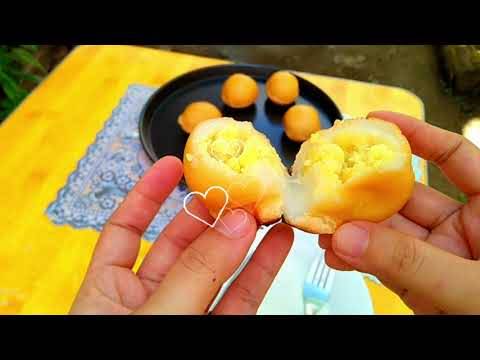
View On WordPress
0 notes
Photo


** Permission to post it was granted by the artist Do not repost/edit the art without permission Please, support the artist on their page too **
Artist : もちごめ
Source
687 notes
·
View notes
Photo

#mochigome #ant #antnovello #novello #novelloristorante #food #foodandwine #langhe #piemonte #handmade #twodopeboyz (at ANT Restaurant & Vacation Apartments) https://www.instagram.com/p/COQqMZxrP3i/?igshid=7sv8lgoyie6k
#mochigome#ant#antnovello#novello#novelloristorante#food#foodandwine#langhe#piemonte#handmade#twodopeboyz
0 notes
Photo
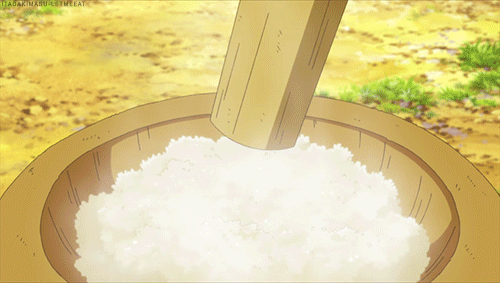
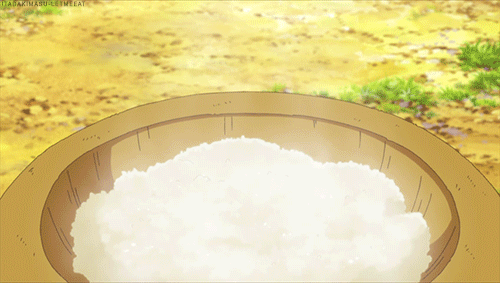
#Youkai Apartment no Yuuga na Nichijou#Elegant Yokai Apartment Life#anime food#mochi#mochigome#cooking#anime#ilme#japan#japanese#gif set
156 notes
·
View notes
Text
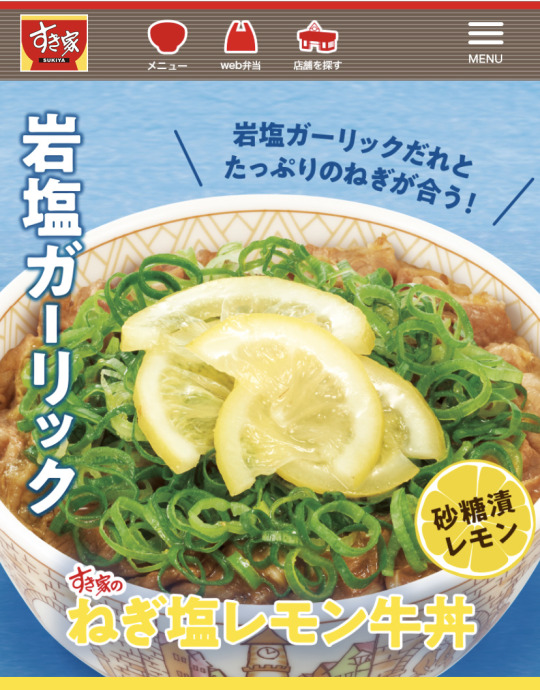
Sukiya’s Green Onion & Salted Lemon Beef Bowl, with garlic rock salt sauce and sugar-cured lemon.
So is this the summer we say fuck it and start putting hot lemon slices on everything? Is this the year we just give up?
But yeah no, I did have to try this and it was pretty nice! I didn’t eat the lemon rinds, though (I hope I wasn’t supposed to?). I didn’t find the lemon particularly sugary.
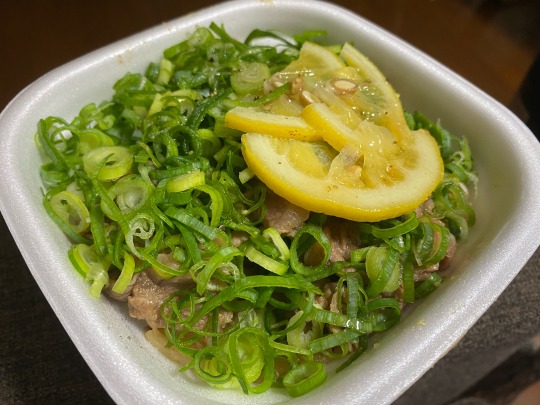

But obviously, lemon bone goes well with garlic bone, garlic bone goes well with green onion bone, green onion bone goes well with beef. I always forget how nice Sukiya is for the price. It never seems worth it these days because of the nonbiodegradable packaging and of course I’m not doing dine-in, but sometimes it can be so comforting.
#japanese food#sukiya#gyudon#beef bowl#oh my mom is happy cause my bro cooked#‘japanese beef & sticky rice’#which apparently is this + mochigome#but it sounds wayyyy more luxe?#anyway#contains meat
30 notes
·
View notes
Photo

Día 4 #inktober #Omamori, viene del verbo #mamoru. Esto significaría defender, proteger, y cuidar. Es por esta razón que estos objetos resultan ser amuletos de protección contra los accidentes y la mala suerte. #inktober #Inktober #2019 #diirlist #omamori#omamoridraw #promptlist #inktoberprompts # #japanese #mamoru #mochigome #japanesebow #drawing #kawaii #japan #japanese #october #ilustradorasmexicanas #ilustradora #ilustradoraschingonas #proteccion #lucky #suerte #ilustradoresmexico #ink #list #follow #mexican #mishcarroll #traditionaldraw https://www.instagram.com/p/B3N8lY0jk14/?igshid=19vdr7jz66581
#inktober#omamori#mamoru#2019#diirlist#omamoridraw#promptlist#inktoberprompts#japanese#mochigome#japanesebow#drawing#kawaii#japan#october#ilustradorasmexicanas#ilustradora#ilustradoraschingonas#proteccion#lucky#suerte#ilustradoresmexico#ink#list#follow#mexican#mishcarroll#traditionaldraw
0 notes